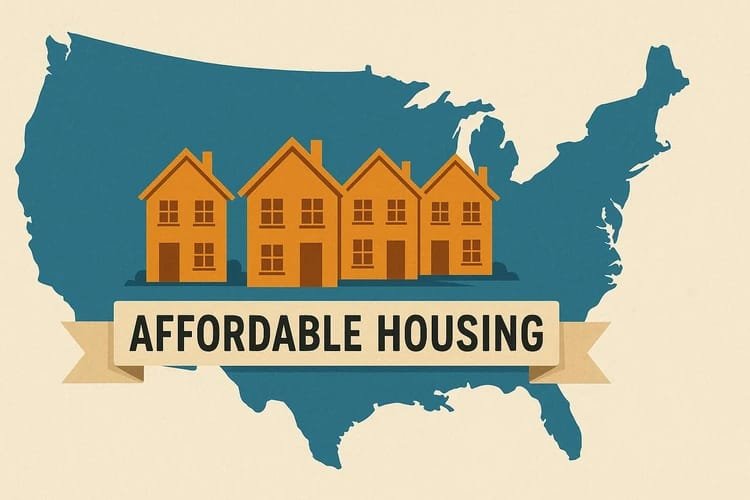Currently with cost of healthcare rising Family Needs in 2025, there is mounting pressure on households across the globe to meet the compulsion of having affordable but complete health cover. Affordability would depend not only on premiums, but out-of-pocket costs (deductibles, copayments, and maximums), as well. This cost formula is very important to families because although the low premiums might have seemed appealing to the families, the high deductibles will cost them at the time of Family need.
In the U.S. as an example, a Reedit user reported that a Silver ACA plan with subsidies could cover zero cost of premiums, zero out of pocket on the first two visits, and maximum out of pocket of 3,600 dollars per family demonstrating the power of subsidies and plan design to provide affordability.

First Line of Defense Employer-Sponsored Plans:
Employer-provided group health insurance as an alternative to family insurance is the most cost effective and beneficial. These schemes, be it HMO, PPOs or EPOs, will normally have cheap premiums with wide coverage’s, and availability of systems of existing providers.
Many households will base their insurance decision in 2025 to employer In other markets, premiums can vary widely among different region and plan type: an article published by Forbes Advisor provides a telling example, where $200 a month family plan in ACA marketplace is incredibly low, a third of the national average .
plans since the price and care system is usually more advantageous compared to the individual-market plans.
ACA: Flexible and Subsidized Marketplace Plans:
Employer coverage remains limited and the Affordable Care Act (ACA) marketplace remains an important source of health insurance to families that lack employer coverage. Premium versus cost-sharing Plans are tiered at Bronze, Silver, Gold and Platinum:
- Bronze: Premiums are the lowest; out-of-pocket costs are the highest-suitable to healthy families who do not anticipate a lot of care.
- Silver: Premiums and cost-sharing in the middle range, with cost-sharing levels commonly the most popular because of the possibility of receiving cost-sharing reductions.
- Gold/Platinum: more expensive, lowest out-of-pocket costs-appropriate to a family with high needs have care.
Through Subsidies, offered by the Premium Tax Credit (PTC), can significantly reduce the price of Silver Family plans, or even wipe out premiums, of the income range 100 percent-400 percent of the Federal Poverty Level. Remarkably, in the recent years, until 2025, these subsidies were extended to higher earnings and larger cutbacks.

Wikipedia
Good examples of this have been played out in a practical perspective: due to the Silver In other markets, premiums can vary widely among different region and plan type: an article published by Forbes Advisor provides a telling example, where $200 a month family plan in ACA marketplace is incredibly low, a third of the national average .
plans having offered families with moderate income literally free premiums, coverage deductibles, good copes and fairly manageable caps on the maximum amount of out-of-pocket expenses, there is an ability to receive a fairly attractive discount rate on expensive healthcare plans, in an environment where highly affordable policies also help in reducing large premiums and coverage deductibles.
Reedit
But these subsidies are set to end at the end of 2025 unless Congress acts and could leave families in 2026 plans with much greater cost burdens.
Market Watch
Reedit
The families are advised to enroll in advance.
Medicaid, CHIP: Public Programs
In low-income families as well as in states where Medicaid was expanded, strong, low-cost-or free-health coverage is available through Medicaid and CHIP (Children Health Insurance Program). Medicaid provides commercial benefits and CHIP usually covers children and even pregnant women at times.
By 2025, expansions will increase the number of families who can receive coverage more than ever.
Eligibility will be based on family income and state regulation; thus one should verify the local enrollment requirements to find out whether subsidized public insurance is an option or not.
HDHPs and HSAs High-Deductible Health Plans (HDHPs)
Certain families might be attracted to High-Deductible Health Plan (HDHP). Such plans have low-priced monthly premiums but stipulate that families make hefty upfront payments before they are allowed to reimburse insurance coverage. They are however complement able with Health Savings Accounts (HSAs), which provide three-fold tax benefits that is contributions are tax-deductible, growth is tax-free and withdrawal to cover medical expenses is tax-free.
Wikipedia
HDHPs can also be a good solution for a family that has limited routine medical expenses and the ability to save toward an HSA, particularly where tax-efficiency is a high priority.
Additions: Health Share of Min. and Peer Type
Such alternatives as Health Care Sharing Ministries (HCSMs), such as Samaritan Ministries or Liberty Health Share, are increasing in the U.S. Members of these Family plans share medical costs in substantially lower amounts, but they cannot expect guaranteed issuance and these plans also tend to exclude preexisting conditions and have no regulatory protection
On the same note, community-based sharing such as Crowd Health will help members share medical costs on a peer to peer basis. The membership fees are low (approximately $55/month), but once more, there is no assurance of benefits, and there are limitations on the conditions that may be covered under membership.
TIME
Such substitutes might suit certain families that want to save money, yet, they have great drawbacks and dangers.
It is also as important as the social variables:
- Do your favorite physicians and hospitals accept your insurance plans?
- Is there any cover on chronic illness/maternity?
- How does the claims flow work cashless, paper, and network-support?
- Are there any covert omissions, upper age limitations, or complicated waiting times?
Here are some suggestions on how to select the right plan to suit your family.
Evaluate Your Requirements.
Look at the family composition, health background, the rate of care and acceptance of maternity or child specific cover requirements. Then determine the importance of fixed annual expenses compared to low-premiums over the short-term.
Eligibility Determination and Budget.
Check eligibility on employer plans, marketplace subsidies or Medicaid/CHIP in the U.S. When it comes to Pakistan, list your budget in PKR and lookout at reliable networks or insurers who provide a deep access to the net.
Show comparison of Total Cost not merely premium.
Compare premiums, deductible, copy’s and max out-of-pocket; apply the example plans (such as the Silver plan on Reedit) to the expected cost in one year with typical usage
Analyze Health Plan Provider Network, and Health Plan Claims Experience.
Maintain continuity of care by choosing those plans that will contain the doctors and hospitals of your choice. The company and platform selection in Pakistan should be based on smooth cashless claims and claims processing without delays.
Move Ahead When Enrollment Windows become Actual.
In the United States, Open Enrollment is the period of time during which an ACA can be selected, which normally falls between the months of November and mid-January with life events being exceptions to that rule.
Forbes
In the case of 2025, increased enrolment beforehand is even more essential owing to subsidy policy uncertainty.
Conclusion
What it will take to find an affordable health insurance plan, which families can afford in 2025, is an active effort to strike the perfect balance between the prices of any health insurance plan, where the depth of coverage does not overshadow affordability, provider networks, and state and federal regulatory environments.
In the U.S., ACA Silver plans Family with subsidies have become far and away the most affordable and comprehensive plans available to many families, but their subsidy policies are in flux in the lead-up to 2026.

When they exist, employer sponsored plans are still very attractive.
When paired with HSAs, HDPs would be efficient and flexible options that would suit those families who are not afraid to manage higher deductibles.
Alternate forms of sharing are potentially cheaper but are more risky and come with no guarantee.




